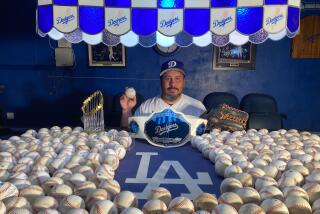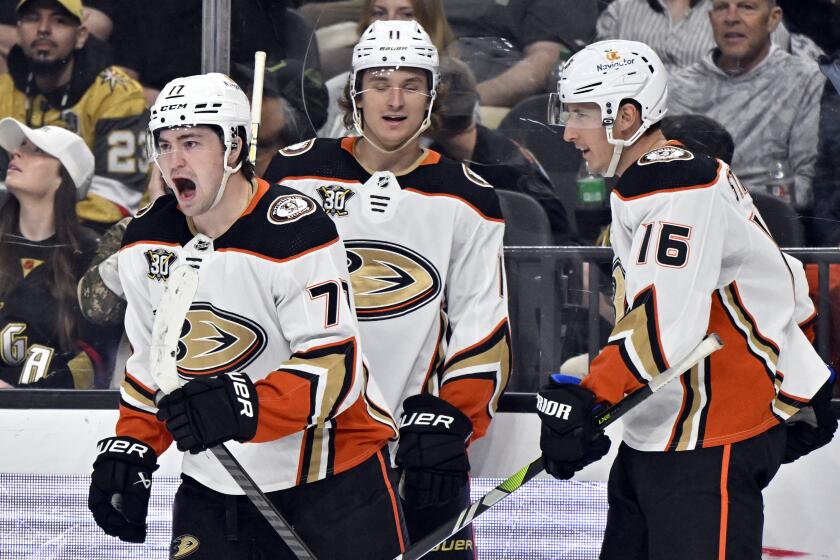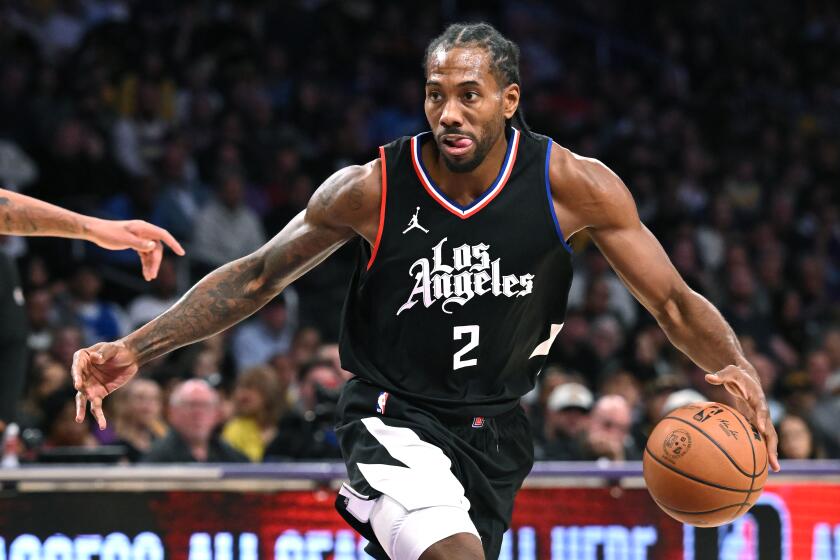Back to the Bleachers
In 1954, a writer named Arnold Hano went to an old bathtub-shaped stadium called the Polo Grounds to see his beloved New York Giants play the Cleveland Indians in Game 1 of the World Series. That game produced arguably baseball’s most famous defensive play, Willie Mays’ “the Catch” off Cleveland’s Vic Wertz (though as Hano pointed out soon after, it was “the Throw” after “the Catch” that was the real stunner).
The game also produced what many consider to be one of the single best sports reporting works in history: a book Hano wrote called “A Day in the Bleachers.” Hano’s writing career has included many articles and sports biographies, but “A Day in the Bleachers” is considered his masterwork. First published in 1955, a special edition was issued in 2004 to commemorate the 50th anniversary of “the Catch.” Next month, Arion Press will issue a limited edition with bonus extras.
Hano didn’t go to the Polo Grounds to write a book--he went to watch a baseball game. But from his outfield perch among the faithful he became inspired and started scrawling observational notes in the margins of his program and his newspaper, filling up all available space (while still managing to keep score). More than just a brilliant account of the day, the book is a primer on how to watch a ballgame in person. The notable baseball writer Roger Kahn called it “the first and, I believe, the best of all the baseball books written from the point of view of the man in the stands.”
Today the Polo Grounds in upper Manhattan is gone. But Arnold Hano is still in the game. Now 84 years old, he lives with his wife in Laguna Beach. When I learned recently that he lived nearby, it made me wonder: What might it be like to attend a game with him today? To go back to the bleachers with a man who so beautifully defined the fan experience? Is it still the game he loved?
Me, I adore baseball. But my faith has been shaken in these days of chemically bloated records and tape-measure salaries. Where does Hano stand? He, who saw Babe Ruth, Lou Gehrig--in Ebbets Field, the Polo Grounds and old Yankee Stadium. Would he accompany me and my son to the bleachers of Dodger Stadium for a day of reflection and comparison? I called him and, thankfully, he was up for our journey. In preparing for our field trip, I also reviewed some of the things Hano wrote in a recent piece in the Los Angeles Times Book Review:
“I have been watching major league games since I was 4. I do not know whether this makes me dean of the school of fanhood, but surely I am an elder on the faculty. Most of the fires of my life have been banked. One passion remains hot and full. My passion is to attend ballgames. It is an urge not to be denied.
“It sustains me. I am held by its elegance, its perfect calculus of 90-foot base paths, its pitching distance of 60 feet, 6 inches to home plate.”
I couldn’t wait for game day.
On a late Sunday morning, I am driving Arnold Hano and my 12-year- old son, Charlie, to Dodger Stadium, where the boys in blue will play the Milwaukee Brewers. En route, my son and I learn that the white-haired Hano is sharp, informed and wonderfully funny in a tough, unsentimental New York way. Dressed comfortably in a checkered button-up shirt and blue jeans, he seems genuinely excited to be heading to a ballpark.
He remembers so much detail from the hundreds of games he’s attended that it doesn’t seem possible. But it is. We hear tales of Babe Ruth and Jackie Robinson (the two men he believes did the most for baseball), Lou Gehrig, Mel Ott, Rogers Hornsby and more; the days of going to the Polo Grounds with his older brother; and how he misses afternoon games and scheduled double-headers. Getting off at Stadium Way and heading up to the parking lot, he tells of his luck to have witnessed not just “the Catch,” but also Don Larsen’s perfect 1956 World Series game and Sandy Koufax’s 1962 no-hitter, among other landmark baseball events. Would his luck rub off on us today?
As we walk to the left-field pavilion gate, Vin Scully’s voice is being piped into the parking lot over the PA system, and Hano’s ears perk up. “Don’t you just love him? Listen to that beautiful voice. And the things he comes up with during a broadcast, the details he remembers.” Of course, he’s right. And the same thing could be said of Hano, who remembers not just pitchers from 60 years ago--but certain pitches. With Scully in the air, we enter the ballpark.
Our seats are in the left-field pavilion, Section 305, Row A, the first row right above the outfield wall. Hano thinks the view is splendid. “These seats are so close to the field,” he says. “I almost feel like I’m back playing shortstop.” (Hano was a standout player at Long Island University.)
My son and I have developed our own simple pregame rituals that mesh neatly with Hano’s. Basically, we get to the ballpark as early as we can to soak up the environment and prepare for the game. We watch the players warm up, study the out-of-town scoreboard and discuss starting pitchers. Hano notes that long ago, part of the experience was arriving early to watch full-blown fielding practice, to get a real sense of what kind of shape the players were in that day. These days, you’re lucky to catch a little batting practice. On this afternoon it is Little League Day, so batting practice is replaced by dozens of teams marching by us on the warning track, a colorful parade of baseball’s next generation.
“What a thrill for a youngster to set foot on a major league field,” says Hano. “When we were kids, we’d exit the Polo Grounds . . . through center field after a game. That was always exciting, walking on a major league field.”
I fetch programs for him and my son, and they both fill out the lineup pages to keep score. When Charlie asks if he’d like a pencil to keep score with, Hano lets him know he’s fine with his blue pen. Once those two are done, we all go for some lunch.
Obviously, ballpark food has changed since 1954, but the hot dog remains a faithful connection to the past. At this stadium, they get no better. We agree that Dodger Dogs are the best ballpark food on the planet.
Back at our seats, we settle into baseball paradise. Dodger Stadium on a comfortable, breezy Sunday afternoon is magical. The old wooden bleachers are packed not with wiseguys and shady urban characters like those who must have been at the Polo Grounds, but with families and many twentysomething Dodgers die-hards. The smell of suntan lotion, the occasional beach ball being pounded around--it’s innocent and summery and I feel like it’s 1976. I ask, “This environment is good, right?”
“Marvelous,” says Hano. “Just wonderful.”
Whew.
We talk more baseball while we wait for the first pitch. I ask if he feels that today’s players are overpaid. “Everyone I know is overpaid,” he says with a grin. “Except me.” The steroid controversy? He looks away. “Terrible. Come on, it’s cheating.” He’s a tough old guy. But you can see he’s hurt by what certain players have done to his game. He waxes on about his current favorites, including Greg Maddux, Omar Vizquel and Vladimir Guerrero (“I love that he doesn’t wear batting gloves--who wouldn’t want to feel the wood on their hands?”).
Then it’s game time. From the opening pitch through the first couple of innings, it’s apparent that for Hano, being at a game today is not much different from attending one back in the ‘40s or ‘50s. He loves it, and he seems to be aware of what every player on the field is doing. He carefully keeps score, as does my son. The sight of the two of them carefully, quietly tracking each play is a nice snapshot. Charlie never got to attend a game with my grandfather or my father, and if he did, I imagine it would have looked something like this. Throughout our day, Charlie, a good student of the game, is awed by Hano’s firsthand accounts of DiMaggio, Ruth and especially Gehrig. He keeps whispering to me, “Can you believe he actually saw those guys in person?”
Until now, talking with this baseball guru, it seems that very little has changed in his years of ballpark experience. That is, until Dodger Olmedo Saenz’s two-run homer in the third. It is at that moment that I become aware of what Hano feels is the biggest difference in ballpark experiences, now versus then. The stomp-and-clap introduction of the song “We Will Rock You” thunders through the park. Also, the electronic scoreboard implores us to “MAKE NOISE.” Hano winces. I ask what he’s thinking.
“There’s the big difference,” he says. “The entertainment factor. All this stuff is so unnecessary. They just feel we have to be entertained all the time. But it’s a distraction. Why distract from the game?”
The electronic histrionics found in most ballparks today eat away at what Hano believes is key to understanding and enjoying baseball: concentration. I offer that maybe it’s the sign of the times, that more and more people are growing accustomed to near-constant sensory stimulation. He agrees. On TV, cellphones, computers--even in a ballpark--we are barraged with messages and entertainment. But is it necessary? Sure, some of it is paid for by sponsors. But a lot of it is not. A lot of it is simply a way to force you to pay attention.
Hano argues that the game is enough stimulation for him, and I agree. Perhaps in a timed, highlight-driven sport such as basketball, hockey or football, the levels of intimacy are not as important. After all, bombast doesn’t feel as out of place after a bone-crushing dunk, cross-check or tackle. But all of a sudden, hearing “These Boots Are Made for Walkin’” after a ball four seems totally unnecessary.
Listening to Hano throughout the day reminds me that before there were flashy scoreboards and noisy entertainment, the game still worked beautifully and entertained millions of people. Baseball rewards patience and concentration with sparkling moments of elegance, intelligence and grit. Blink and you might miss the right fielder’s early break to the ball, or the catcher hustling up the line to back up a throw.
“We used to talk between innings,” he recalls. “About the game. About who was up next. About strategy. What’s wrong with a little time to reflect? People are afraid to be bored for one second. And as for cheering, if you have to be told to yell when your team is trailing by a run, or when there are two strikes and two outs--what kind of fan are you?”
A wave gains traction in the crowd. Hano rolls his eyes. “The wave . . . I thought it was dead . . . I’d hoped it was dead.” Once again, the electronic message boards begin blinking in big blue letters “Get louder!” The crowd responds. “Get Louder!” The crowd responds more. “GET LOUDER!” The crowd roars. The message disappears, and the crowd gets quiet. The three of us laugh--it is absurd. But being with Arnold Hano, it seems more ridiculous than ever. He is patient, he concentrates and he most definitely does not want to be told when to cheer. He clearly loves being here, but the environment no longer matches the character and simplicity of the game.
Apropos of nothing, Harry Belafonte’s calypso chant “Day-O” is played to create a call and response. The crowd takes the bait. Animated auto races soon follow on the scoreboard, along with blooper highlights, movie commercials and more “entertainment.” And while it never bothered me too much before at games, the fact that it bothers Hano bothers me.
For the rest of the afternoon my son and I focus on the game and talk more baseball with Hano. I think of some of the wisdom from his book as we watch. As Hano attributed to the legendary broadcaster Red Barber, when a ball is hit to the outfield, don’t watch the ball--watch the runners and outfielders. A towering “routine” fly is hit to the Dodgers’ outfield, and I’m reminded of another point in the book: how silly it is to term even the most basic fly ball as “routine.” As Hano poses, “Have you ever tried to run 40 feet to catch a baseball that has traveled some 330 feet in length and has described an arc about a hundred feet high?” I watch what sort of leads runners take, the shifts fielders employ and everything in between.
Baseball is a strange game. There’s no clock, and games usually last about three hours. During that time, the ball is rarely in play more than nine minutes. For Arnold Hano, just because the ball is not in play doesn’t mean there isn’t baseball to experience. Or talk about.
As for the bleacher “fanhood” (what Hano calls bleacher dwellers), today they are smart and attentive, though a small, rowdy group of guys rides Brewers outfielder Carlos Lee mercilessly. When he hits a prodigious (though meaningless) homer in the ninth, Hano says, “That’s the best way to shut them up.” The Dodgers win the game, 10-2. I realize that all day, all we talked about was baseball. And all we thought about was baseball.
We recount the game as we leave: Two double plays, four home runs (including Russell Martin’s first ever dinger) and a terrific job by Dodgers pitcher Aaron Sele, who is fighting to win a spot back in the bigs. Sele particularly impressed Hano, who had the benefit of growing up watching Carl Hubbell, Lefty Grove and Bob Feller. Hano exhales as he gets into my car.
“What fun that was,” he says, smiling. “There’s still nothing like going to a game. Even with the distractions. For all its faults, baseball may still be the most indestructible sport. And it’s still our greatest, simplest game.”
What might it be like going to a game 50 years from now, I wonder.
“It will still be great. And I think, I hope, there’s at least one woman playing in the league. Gosh I hope so. A pitcher, no, maybe a solid infielder.”
As we say goodbye, I think back to my favorite line of his: “A baseball game is a mystery, unfolding. Let the scoreboard tell me hits, runs and errors, and the scores of out-of-town games. I’ll do the rest.”
I have been to many games in my 44 years. But I cannot recall studying one this closely, or appreciating one as much as I did when I was with Hano. That’s because the old gentleman reminded me of how much silent magic there is between the lines. All you have to do is tune out the distractions and let the mystery unfold. Lose yourself in the game.
And never, ever let a scoreboard tell you when to cheer.
More to Read
Get our high school sports newsletter
Prep Rally is devoted to the SoCal high school sports experience, bringing you scores, stories and a behind-the-scenes look at what makes prep sports so popular.
You may occasionally receive promotional content from the Los Angeles Times.






